Alcohol is legal and widely available, but it is an intoxicating and addictive substance that can have harmful effects on the human mind and body. It reduces inhibitions and distorts judgment and rational decision making, making it the number one cause of criminal...
Tags

Celebrating customer experience: Insights from SCIEX leaders
Introduction Customer Experience Day (CX Day) is a special occasion for SCIEX, celebrated every first Tuesday in October. It’s a day dedicated to recognizing the incredible value of our customers and the relentless dedication of our associates who strive to make...

Detecting low levels of drugs and their metabolites in hair and nail samples using LC-MS/MS
You probably have heard of testing blood and urine samples for the presence of drugs and their metabolites. But do you know about the benefits of hair and nail analysis? In a recent webinar, Tina Binz, Deputy Head of the Center for Forensic Hair Analysis, University of Zurich, discussed the benefits of developing comprehensive and sensitive LC-MS/MS for the detection of low-level drugs and metabolites in keratinized matrices.

LC-MS system replacement: Are you ready?
Meeting deadlines in a bioanalysis laboratory can be a big challenge. Older, less sensitive and less reliable LC-MS systems make it even more difficult. Even the disruption caused by the installation and validation can be disconcerting and delay decisions. Does this sound familiar?
Questions and answers to help improve your mycotoxin analysis
During a recent webinar I shared method details for mycotoxin analysis on the SCIEX 7500 system. In this blog i will share the Q&A for the submitted questions that we did not have chance to answer during the live webinar.

Guide decisions during cell line development with more information at the intact level
Monitoring product quality attributes (PQAs) throughout monoclonal antibody (mAb) development is vital to ensuring drug safety and efficacy. By adopting orthogonal analytical techniques and integrating new technologies that have the potential to provide more information, it is possible to improve product quality and manufacturing efficiency and make more informed decisions.

Maximize NPS analysis with accurate mass spectrometry
LC-MS/MS is a powerful analytical tool in forensic toxicology testing that can support a variety of testing regimes such as screening, confirmation and quantitative workflows. More specifically, analysis of NPS using LC-MS/MS provides many advantages, including the ability to reliably detect new drugs and their metabolites from a variety of biological matrices.

Metabolite identification and peace of mind
Managing metabolite identification (Met ID) studies is challenging, so what is at the top of your priority list as you plan the year ahead? Ensuring you have the data needed to manage product safety, meeting deadlines, staff recruitment and training, maintaining compliance, capital expenses, or something else?

What has the Echo® MS system done for the pharma industry? (And don’t just take our word for it!)
SCIEX was very proud to have an illustration of the Acoustic Ejection Mass Spectrometry (AEMS) technology that powers the Echo® MS system on the front cover of the Journal of the American Society for Mass Spectrometry in January 2023. The associated article—Ultrahigh-Throughput Intact Protein Analysis with Acoustic Ejection Mass Spectrometry—was co-authored by scientists from SCIEX and Merck.
Methods for OPI electrode cleaning for Echo® MS system electrodes
Depending on the samples you are running on the system, it is possible for the Open Port Interface (OPI) electrode to become dirty or occluded over time. Below are two different cleaning strategies that can help you maintain your Echo® MS system and keep your OPI...

Rescheduling a Schedule I substance, and the Delta-8 controversy
Did you know that in the US, drugs and other chemicals are classified into 5 distinct categories depending on the drug’s acceptable medical use and its potential for abuse or dependency? Drugs federally classified as Schedule I substances by the US Drug Enforcement Administration (DEA) are considered to have the highest potential for abuse and for creating severe psychological and/or physical dependence. In addition to heroin, LSD and MDMA (ecstasy), cannabis is classified as a Schedule I substance in the Controlled Substance Act of 1970, which means it has no approved medical usage.
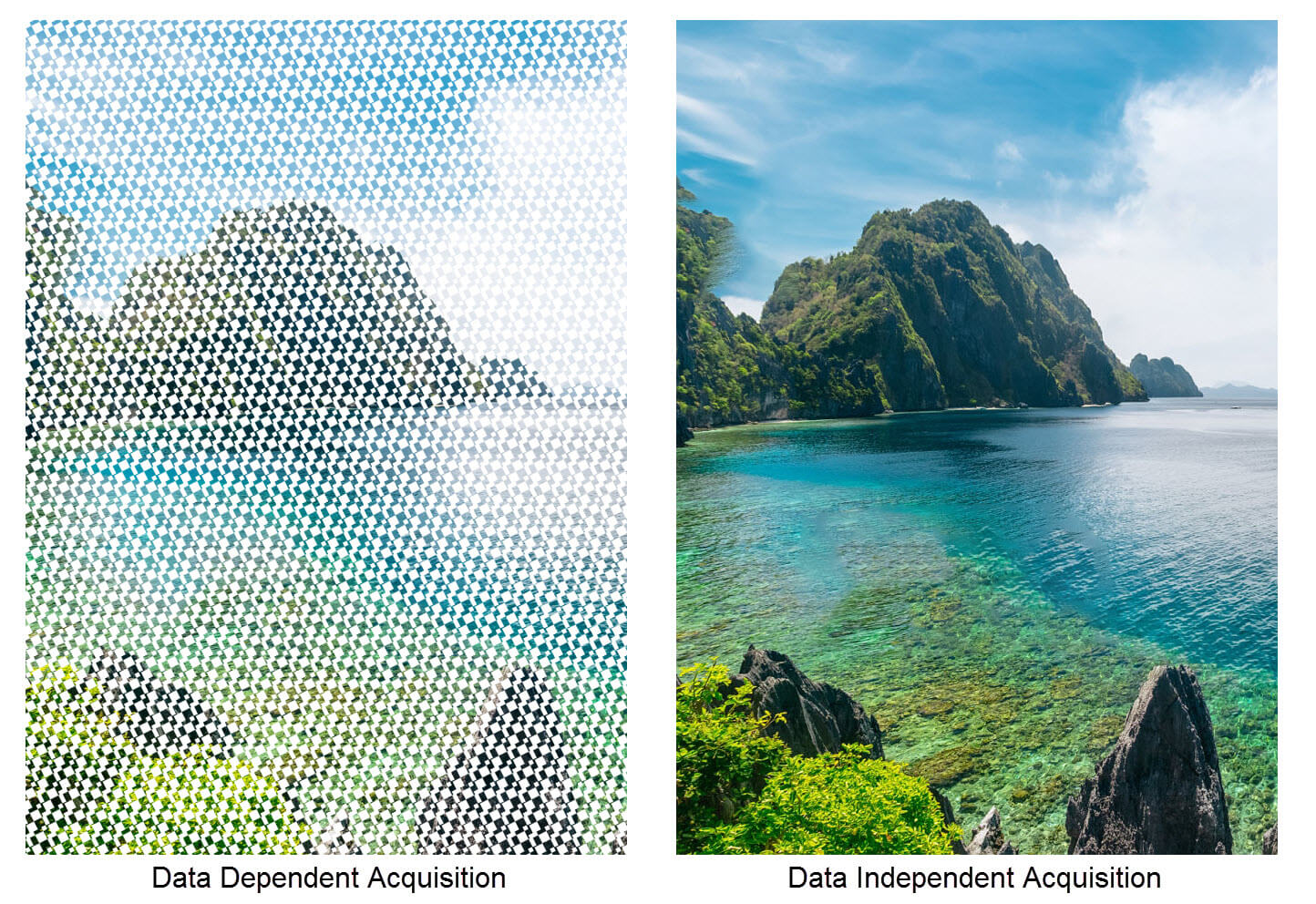
Data Independent Acquisition Mass Spectrometry with the Power of SWATH
There are many different methods in use today to acquire data on a mass spectrometer, but few have generated as much buzz in recent years as SWATH technology. First reported 5 years ago by Ruedi Aebersold and his group1, SWATH® Acquisition on a TripleTOF® instrument has rapidly become one of the premier acquisition strategies for identification and quantitation of complex samples. But what exactly is SWATH and why is it so powerful? In order to answer these questions, let’s first take a step back and look at the larger picture.
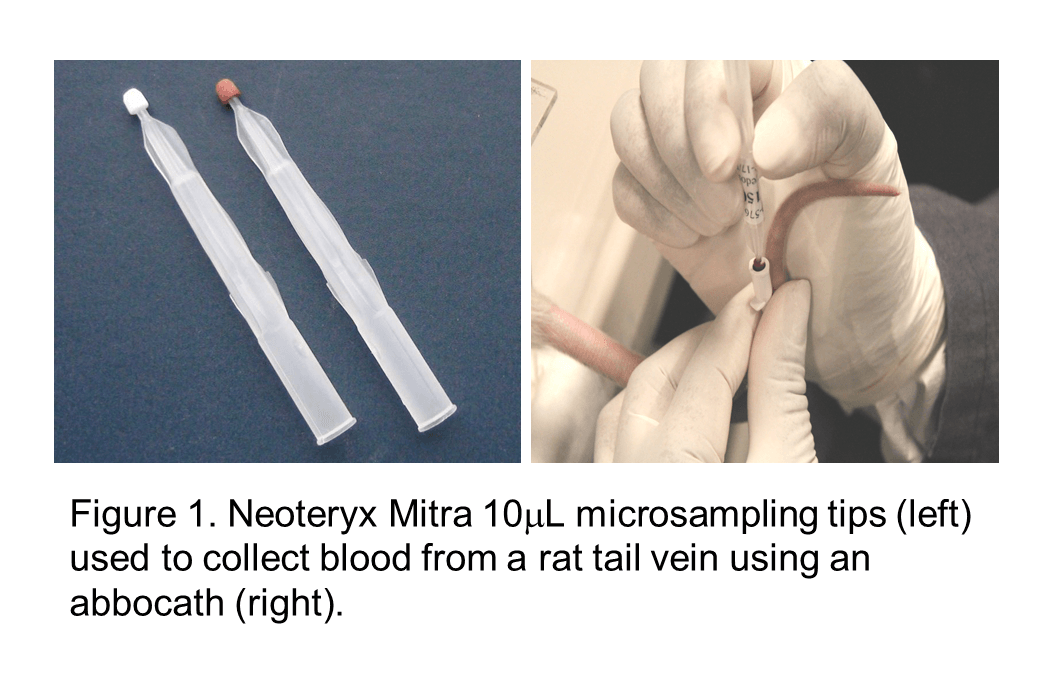
Volumetric Absorptive Microsampling and the SCIEX 6500+: A Pre-Clinical Case Study for the Biotherapeutic Exenatide
In an effort to Replace, Refine, and Reduce the number of animals used for pre-clinical research, several microsampling strategies have been implemented which allow for the consolidation of satellite TK and main study groups. In addition to the ethical gains driven by these 3Rs, microsampling has the potential of increasing scientific value since it becomes feasible to directly correlate exposure, toxicological effects and pharmacological response in the same individual
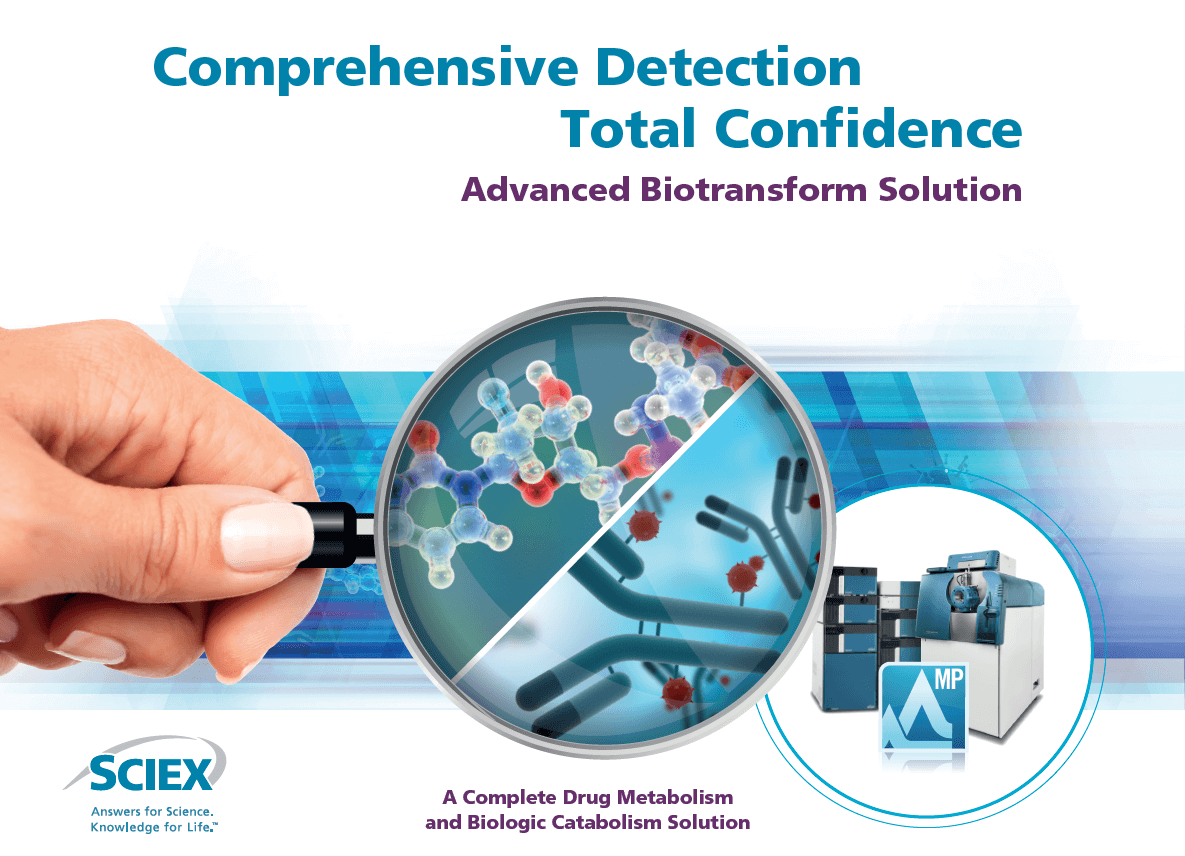
Say Goodbye to MetID Headaches, Say Hello to Automated Large Molecule Catabolism Processing
Is your mind swimming with large molecule catabolism data? Do you spend hours manually processing through complex spreadsheets to match your data with theoretical biologic catabolites? Are you wasting precious time by drawing out and processing your therapeutic peptide as a small molecule? Are you worried that you could be missing something?

Using the X500R QTOF System and SCIEX OS to Identify and Quantify Food Residues
Farmers use pesticides to protect crops from insects and disease as pesticides are necessary to create the volume of food that our population requires. Without them, we would not be able to grow enough crops to feed the world—they are a necessary evil. Government agencies such the Food and Drug Administration (FDA) in the United States and pesticide manufacturers, however, work hard to educate farmers on how to minimize their use. However, sometimes farmers add too much which leaves a residue. Upon harvest, farmers wash the fruit and vegetables. Once complete the crop then makes its way to the wholesaler and eventually, the supermarket. Even so, there may still be pesticide residue on the produce, which is why government agencies randomly pull produce from store shelves for testing of maximum residual limits (MRLs) and we are encouraged to wash our food before consuming it

The World Has its Eyes on Precision Medicine
What if we could understand and then treat diseases on an individualized level, in a way that was tuned to a person’s individual biology? Not in a futuristic, ‘wave a high-tech scanner across a person’s body’ way, but in a legitimate ’I can run a lab test and know the best action to take’ way. This is the promise of Precision Medicine, to deliver the right treatment to the right patient, at the right time, predicting more accurately which treatments will work for certain groups of patients, in contrast to the pervasive one-size-fits-all approach. More specifically, if we could provide a comprehensive report at the molecular level of an individual (based on genome, proteome, or metabolome profiles), a physician could be much better informed to make optimal treatment decisions. And if we could track these profiles over time, a person could adjust their lifestyle to focus on long-term wellness.

Setting Records with Fast Glycan Technology
There is a lot of talk going around in the lab, and it has to do with the newly released Fast Glycan Labeling and Analysis technology. Where once research analysts needed to set aside days to perform glycan analysis, now takes an hour or so. Glycans are immediately identified by the software – so no need for data interpretation. That’s up to 5x faster than HILIC.
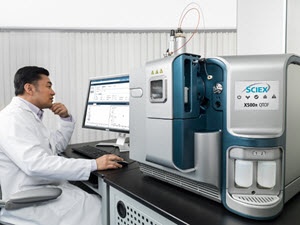
Confidently Screen For Your Usual Suspects—Plus Those That May Be Lurking Within Your Food Sample
The demand on labs throughout the world to run their triple quadrupole mass spectrometers to maximum capacity is ever increasing. Instruments are often operated continuously to ensure regulatory screening requirements are satisfied for targeted pesticides, mycotoxins, and veterinary drugs. Whether you are a commercial lab or a food manufacturer, the quality of the data you acquire is vital to your business. You must be certain that the last batch of strawberries you tested conform to pesticides regulations—your targeted list of usual suspects.

Turning up the Speed on Forensic Toxicology Screening and Quantitation
Working in a forensic lab means technicians want super high-quality data in ultra-fast time. Yet, how do you go about detecting an unlimited number of analytes without re-injecting the sample all while new targeted compounds are being added to the screened panel? In the following application note, “Ultra-Fast Forensic Toxicological Screening and Quantitation in Under 3 Minutes Using SCIEX X500R QTOF System and SCIEX OS 1.0 Software,” researchers set out to achieve a fast method that could detect an unlimited number of analytes with all information afforded mass accuracy, LC retention time, and MS/MS spectral library matching.

What Food Safety Trends are Coming This Year?
As we settle into 2017, I can’t help but reflect on the previous year’s food safety. Take for example the legislative changes meant to contain contamination outbreaks like those happening in places like China, Singapore, and New Zealand. Over the past year, we have developed new methods that detect antibiotics in poultry feed, LC-MS/MS Analysis of Emerging Contaminants, and help set food standards in China. All the while developing more sophisticated technology to keep up with testing demands.
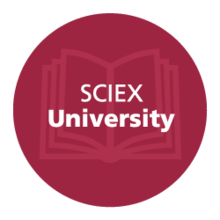
Never Stop Learning with SCIEX University
Did you know that when you log into SCIEXUniversity, you have 24/7 access to educational tools? Simply click on the Support from SCIEX.com and select SCIEXUniversity. Here you will find more than 100 newly revamped courses developed by in-house experts, scientists, and researchers who, just like you, are interested in the next scientific breakthrough. Whether you are a beginner mass spec user or have years of experience, these online and on-site courses are designed with you, the user, in mind. What is more is that the course catalog offers self-paced training and certification programs to help you get better acquainted with software, instrumentation, and workflows

Fast and Simultaneous Analysis of Ethanol Metabolites and Barbiturates
While most analytes in forensic applications analyze well with positive ionization, there are analytes that show better ionization efficiency with negative ionization, for example, acidic compounds. These analytes include ethanol metabolites such as ethyl glucuronide (ETG), ethyl sulfate (ETS), and the barbiturates such as amobarbital, butabarbital, butalbital, pentobarbital, phenobarbital, and secobarbital.
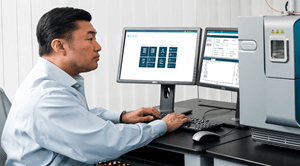
It’s a Point and Click World with the X500B QTOF System for Biologics Characterization
Did you know the X500B QTOF system makes point and click workflows for Biologics Characterization possible on your mass spectrometer? The newly-designed SCIEX OS software interface brings to life fluid navigation and ease of use so you can keep moving forward on your scientific discoveries. In fact, it’s so simple to learn and operate that you and your team can be up and running faster than you might expect.

PPCP Detection in Drinkwater is no Match for the QTRAP® 5500
SCIEX is no stranger to drinking water analysis, and the Environmental Compendium once again addresses the topic in an application note which covers LC-MS/MS with Fast Polarity Switching. Using the QTRAP® 5500, researchers were able to detect a large panel of Pharmaceuticals and Personal Care Products (PPCP’s) while performing fast positive/negative switching all from a single injection. Method details go the distance in this application note, as five experiments were called into action for comparison.

From Extraction to Cleanup—Measuring Mycotoxins from Cornmeal Products
When we look at emerging food trends for this coming year, you may be surprised to find that the US cornmeal market is making headlines as it is set to grow at a compound annual growth rate (CAGR) of two percent by 20201. This is the type of news that excites us, scientists, as it reminds us why we test for things like mycotoxins in cornmeal and the impact such analysis has on farmers and food manufacturers.
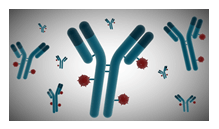
See How Easy It Can Be to Get Expert Results for Biologics Characterization
Learning a new mass spec system can be a daunting task. Aside from the opportunity costs of training new users, you might face the hassle of downtime, and the wait to get expert help when needed. The X500B QTOF system puts a new spin on biologics characterization workflows because it is so easy to learn and operate that you can be up and running much faster than you expect. Powerful new software tools dramatically streamline method development and data processing, to enable everyone in your lab to get expert results. It’s fast because it’s easy, even for new users.

Getting a Clean Match in Forensic Toxicology using LC-MS/MS
As a forensic scientist, what holds you back in the lab? It’s a question we often ask ourselves here at SCIEX, as product development depends on customer wants, needs, satisfaction, and ease of workflow. Ensuring evidence can withstand forensic scrutiny, for example, correlates with the integrity of testing procedures. Knowing this, how do you convince your staff to be confident in results, or convey technical data to a non-technical courtroom audience? If you have been left wondering how to get to the bottom of topics like these, check out the following toxicology toolkit. It’s a bundle of resources at your fingertips that includes a webinar led by Tania A. Saski Ph.D., Northwest Physician Laboratories, Bellevue, Using QTRAP® Technology to Provide Accurate Identification and Confirmation Beyond a Reasonable Doubt, and so much more

Looking to Quantify and Identify Pesticides in your Food Samples?
Visit our offices on any given day, and you are likely to discover researchers putting mass spectrometry to the test. The hum of the mass spectrometer is as common as conversations as scientists are tasked with developing methods that can be applied in real-world lab scenarios. In this case, André Schreiber SCIEX, Concord, Ontario, Canada, detailed, Comprehensive Quantitation and Identification of Pesticides in Food Samples Using the SCIEX UltraLC 100* and the SCIEX QTRAP® 4500 System.

Discover the New X500B QTOF System, the Simpler, Faster Path to Biologics Characterization Answers
Have you ever wished for a compact instrument that delivers expert-level answers to your most complex biotherapeutic characterization challenges faster and easier than what you are doing now? At SCIEX, we recognize that even expert users want easier ways to perform daily characterization tasks and get great results every time. That’s why we set out to develop the X500B QTOF system: a robust and reliable new instrument and software solution that reduces complexity and simplifies biologics characterization workflows so every scientist can get expert-level results
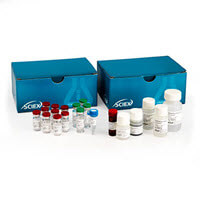
How to Achieve Higher Sensitivity with Hybrid Immunoaffinity LC-MS Assays
Protein-based biotherapeutics, including monoclonal antibodies (mAbs) and antibody-drug conjugates (ADCs) are a growing component of pharmaceutical companies’ drug pipelines. The growth of ADCs in particular is due to their ability to selectivity target and deliver a potent molecule to a cancer cell based on a specific tumor marker. In order to support this growing class of new drug molecules, robust and reliable bioanalytical methods are required. While ligand binding assays (LBAs) like ELISA have been the most popular platform for biotherapeutic quantitation, bioanalytical scientists have been increasingly adopting hybrid LBA/LC-MS methods in this area.

The Application of Research Grade MetabolitePilot™ Software for the Determination of the Catabolic Peptide Products of Exenatide
The stability of peptide and protein biotherapeutics directly impacts their pharmacokinetic profile, efficacy, and safety. It is therefore essential to characterize the stability of a given bio-therapeutic including both in-vivo and in-vitro catabolism, thereby...